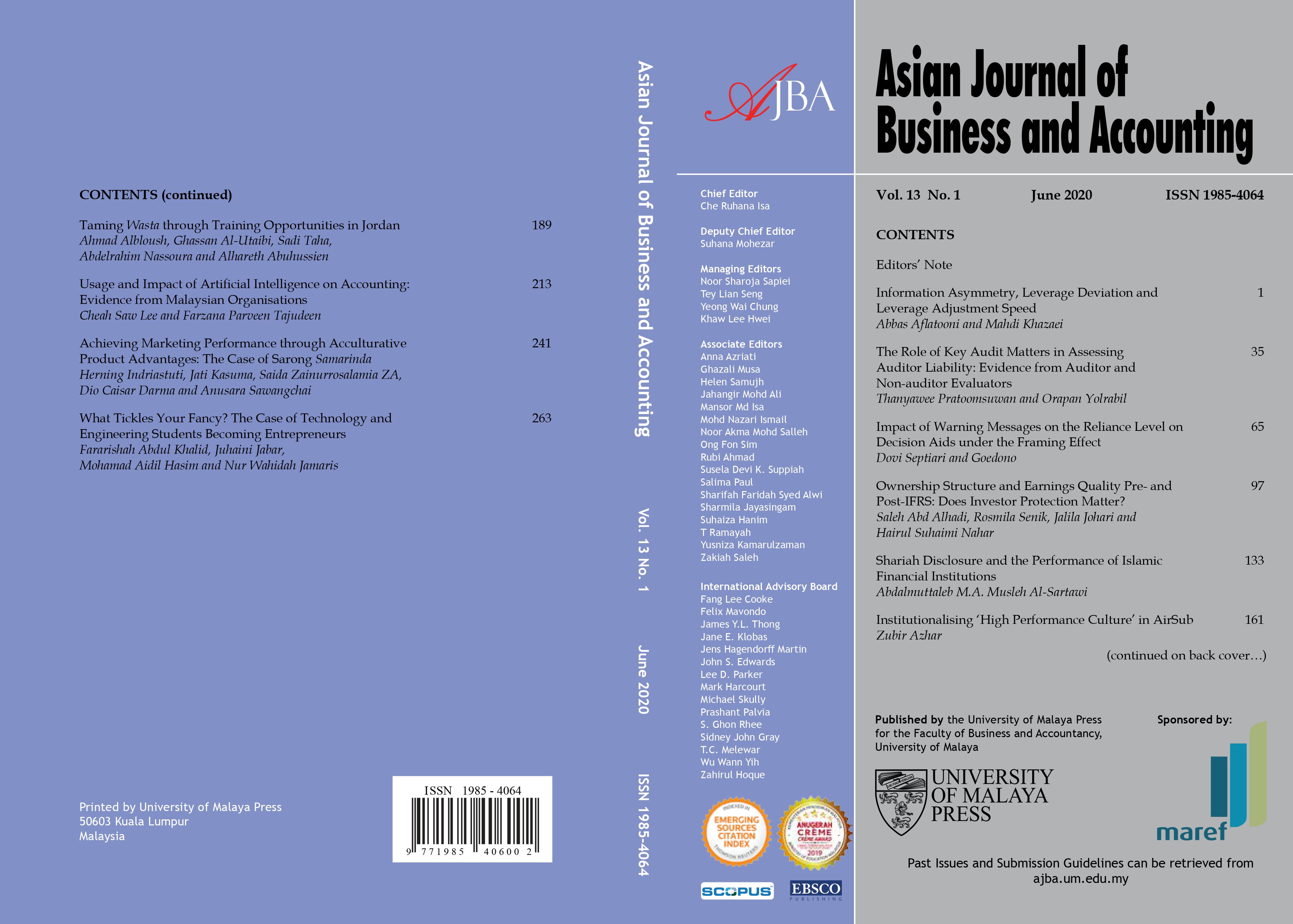The The Role of Key Audit Matters in Assessing Auditor Liability: Evidence from Auditor and Non-auditor Evaluators
Main Article Content
Abstract
Manuscript type: Research paperResearch aims: This study examines the effects of key audit matter (KAM) disclosures in auditors’ report and their impact on auditors’ legal exposure in cases of fraud and error misstatements.
Design/Methodology/Approach: To determine the effect of KAM on auditor liability, an experiment was employed. The participants included 133 professional auditors recruited from the Big 4 audit firms and 134 MBA students.
Research findings: The KAM effect is manifested in different ways for different evaluators. Specifically, auditor participants assess higher auditor liability when the misstatement relates to error than when it is connected to fraud. KAM also appears to reduce auditor’s liability in cases of fraud, but not in cases of error. In comparison, nonprofessional investor participants rated a higher auditor liability when the misstatement relates to fraud than to error. KAM also appears to have a non-significant impact on auditor liability. Taken together, the results support the view that instead of increasing legal exposure as audit practitioners fear, KAM disclosures could actually mitigate, if not maintain auditors’ risk of legal exposure.
Theoretical contribution/Originality: This study contributes to the accounting literature by broadening one aspect of KAM when used in a different audit setting – fraud and error misstatements. The conflicting evidence of the KAM effect on auditor liability in alternative audit settings warrants further investigations. The outcome derived could alter the impact of KAM disclosures on the assessment of auditor liability.
Practitioner/Policy implication: The findings of this study, especially the non-significance of KAM disclosures as evaluated by non-professional investors, inform policymakers and related parties that investors need to be educated and better informed about KAM disclosures and their objectives when assessing misstatements.
Research limitation/Implications: The design of this study does not accommodate settings where the auditors have the opportunity to communicate with their peers, a factor which could affect their judgment. This is the general limitation of the current study which may be viewed as slightly unrealistic since discussions are often encouraged among committee members while in a courtroom when making judgments.
Keywords: Auditor Evaluator, Auditor Liability, Auditor’s Report, Disclosure, Key Audit Matter
JEL Classification: M40
